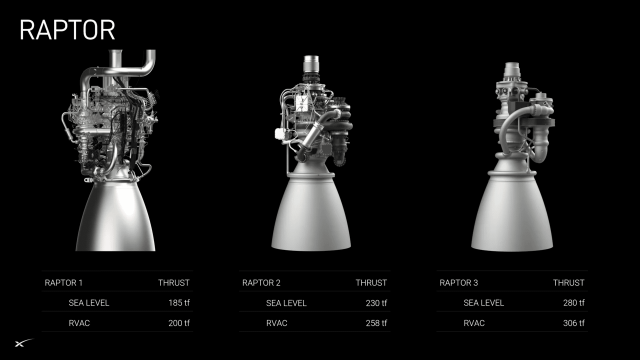The current version of SpaceX's largest carrier is twice as powerful as Saturn 5, the most powerful rocket of the past. However, a document from the US Federal Aviation Administration showed that Elon Musk plans to seriously widen the gap. Along the way, his rocket will significantly increase the number of engines in both stages, as a result, it will become higher than the highest pyramid on earth.
All Starship flights are currently conducted from the Starbase spaceport in Boca Chica. However, for a successful SpaceX spacecraft mission to the Moon, which should take place automatically in 2025, many launches of this carrier are necessary at once. In addition to launching the Starship HLS lunar spacecraft, it will be necessary to deliver another storage ship into orbit and make at least a dozen Starship tanker flights to it.
This requires a large number of flights at once, for which Elon Musk's company is building a launch infrastructure at the Kennedy Space Center in Florida (site LC-39A). The construction itself will be completed only in the second half of next year, but SpaceX must submit documents to the US Federal Aviation Administration (FAA) in advance. As a result, the agency has published a document on the impact of the new site on the environment now.
It contains quite interesting information. For example, if the federal administration allows only 10 Starship launches per year at Starbase, then 44 launches per year (almost one per week) were immediately allowed from Florida.
Modern Starship systems have 33 first-stage engines and six second-stage engines, together carrying 4,500 tons of fuel. The FAA document states the parameters of the future modification of the system, and they differ significantly. Its height, according to the document, will be 150 meters — more than the pyramid of Cheops.
The first stage will receive two additional engines, the second — three. In total, instead of 39 Raptors, the system will carry 44, the total amount of fuel will be increased to 6,700 tons, that is, by 49%. Only the second stage will carry 2,100 tons of fuel, which significantly increases its capabilities in outer space.
It is stated that the maximum thrust of the first stage of the system will be 103 megawatons (approximately 10,500 tons), the second — 28 megawatons (about 2,855 tons). That is, the peak thrust of the system will increase by one and a half times relative to the current approximately 7000 tons.
For comparison, we can recall that before Starship, the most powerful rocket in the history of mankind was the one-time Saturn 5. Its peak thrust was 34.3 megawatons. Thus, the new version of the SpaceX system will not be twice as powerful as Saturn, but the second. Based on the thrust, the payload put into orbit should grow to 150 tons.
The company uses water to reduce noise and cool down when launching such a powerful rocket. The FAA document claims that the new version of Starship will require 3,750 tons of water for each launch. Today's version of the same carrier uses half as much water per launch.

Increasing the number of engines from 39 to 44 alone is not likely to be enough to increase thrust by one and a half times. The rest of the thrust growth can occur due to an increase in the power of Raptor engines, which are also evolving
Image source: Wikimedia Commons
The document also showed that methane (rocket fuel) will be delivered to the new transport site via pipelines. Liquid oxygen (oxidizer) and nitrogen (for auxiliary systems) are planned to be obtained on site using cryogenic air gas separation systems owned by SpaceX itself and under construction at the site. Now liquid methane is brought to the base by trucks, which makes it somewhat more expensive than pipeline gas.
Details about the new version of the carrier and the infrastructure for it as a whole look quite expected: Elon Musk noted a few years ago that he would bring the payload of Starship to 150 tons in a reusable version. Previously, however, it was unclear that he was planning this as early as 2025. It is somewhat unexpected only that the document of the federal department mentions the possibility of landing both stages of the new system on ships at sea.
There are no such ships for Starship today: they should be very large, since we are talking about structures with a height of 70-80 meters each, while almost empty when landing. This would not create big problems on the Moon and Mars, but landing in the seas of the Earth means the likelihood of strong waves, in which even the first stages of the Falcon 9 with a height of a little more than 40 meters sometimes turn over. How this is supposed to be implemented for much larger new stages is not yet clear.

